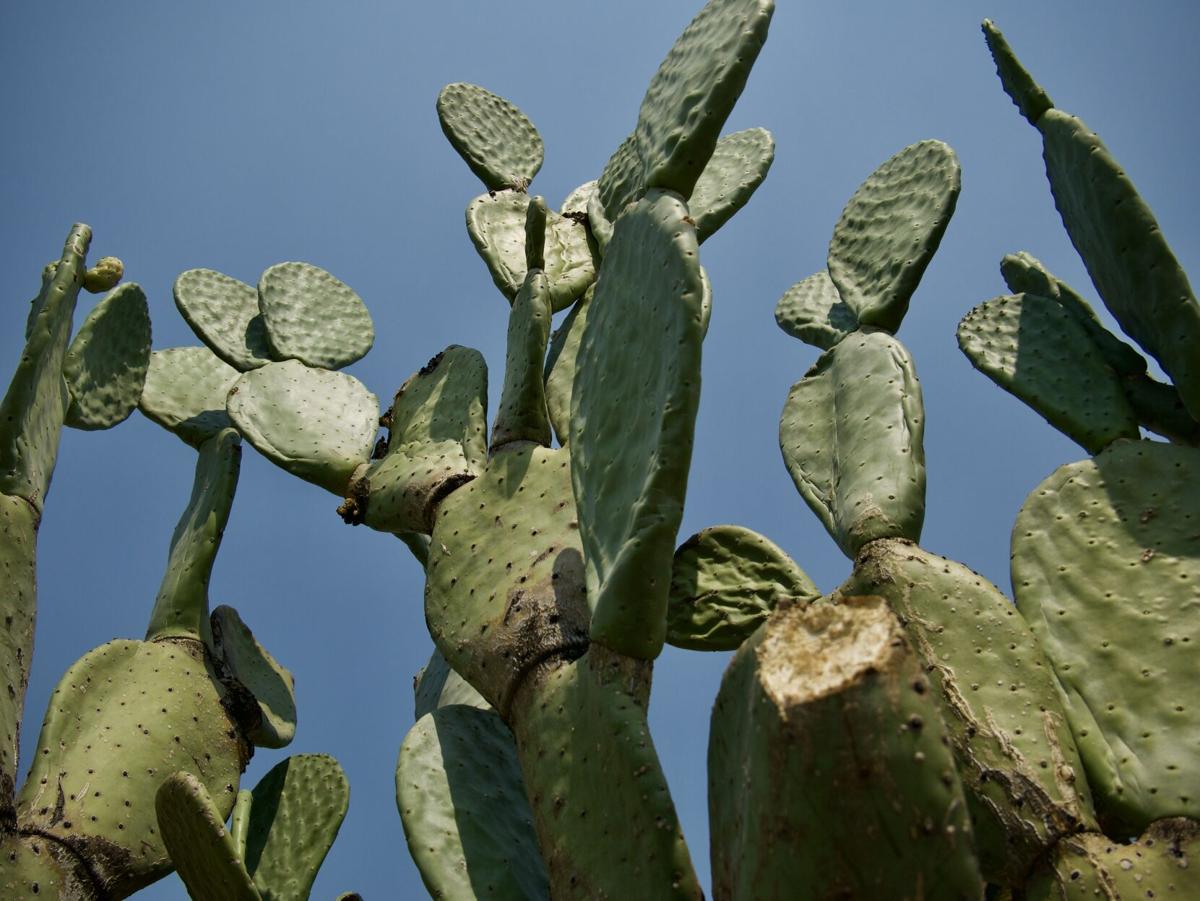The Indian fig cactus (Opuntia ficus indica) is one of at least 18 species of the prickly pear cactus. It is a native plant, and as such is pretty bulletproof — it tolerates drought, reflected heat and full sun, and is hardy to around 16 F. The cultivar 'Burbank spineless' is great for home gardens, because it has no large spines (although it does have glochids) and has a sculptural growth habit as large as the height of a small tree.
Due to its relatively fast growth and habit (as much as 15 feet tall and 10 feet wide) the Indian fig can be used as a privacy fence and hedge of sorts, as well as for shade. It’s also a handy plant to have around other cacti, as the pads shrivel during dry times and can act as a great indicator of whether you need to water.
In the past, Indian fig has also been used for cattle feed. Native birds love to perch on it, and will happily eat the fruits if you don’t want to. If you have one that produces good fruit, or has other characteristics you like, you can propagate it very easily — just stick a pad from an existing cactus in the ground or in cactus potting soil and give it a bit of water initially and it will grow. As with any cactus, make sure you make a note of the south side of the plant before moving it anywhere or transplanting. Cacti develop protection against the sun’s rays, so replant it with the same orientation.
This plant is incredibly versatile and has many human uses. Its fruit (tuna) and pads (nopales) are edible, nutritious, and tasty. Nopales are the pads and are picked when young, before spines are hard; their texture and taste has been compared to string beans. Tuna are the fruit and when eaten fresh taste like sweet watermelon; it can be made into jams, jellies, syrups, and wine. The dried flowers of the cactus can be brewed into a tea.
The fruit, juice, and pads may have anti-diabetic effects, and contain lots of Vitamin C and antioxidants. You can get rid of the glochids on the fruit or pads by scraping and carefully washing them off; some people also recommend burning off the glochids over an open flame.
The mucilaginous insides of the pads can be applied to skin to ease irritation, soreness, itching, and bruising. The plant also acts as a host for cochineal, an insect that has been the source of red carmine dye for centuries — it was even used to dye the British army’s famous red coats. If you notice a lot of these insects (the beetles make white, fluffy wax coverings, called cochineal scale, to shelter the females), you can simply hose them off. Make sure your cactus is watered, as stressed cacti tend to be less resistant to the infestations.





